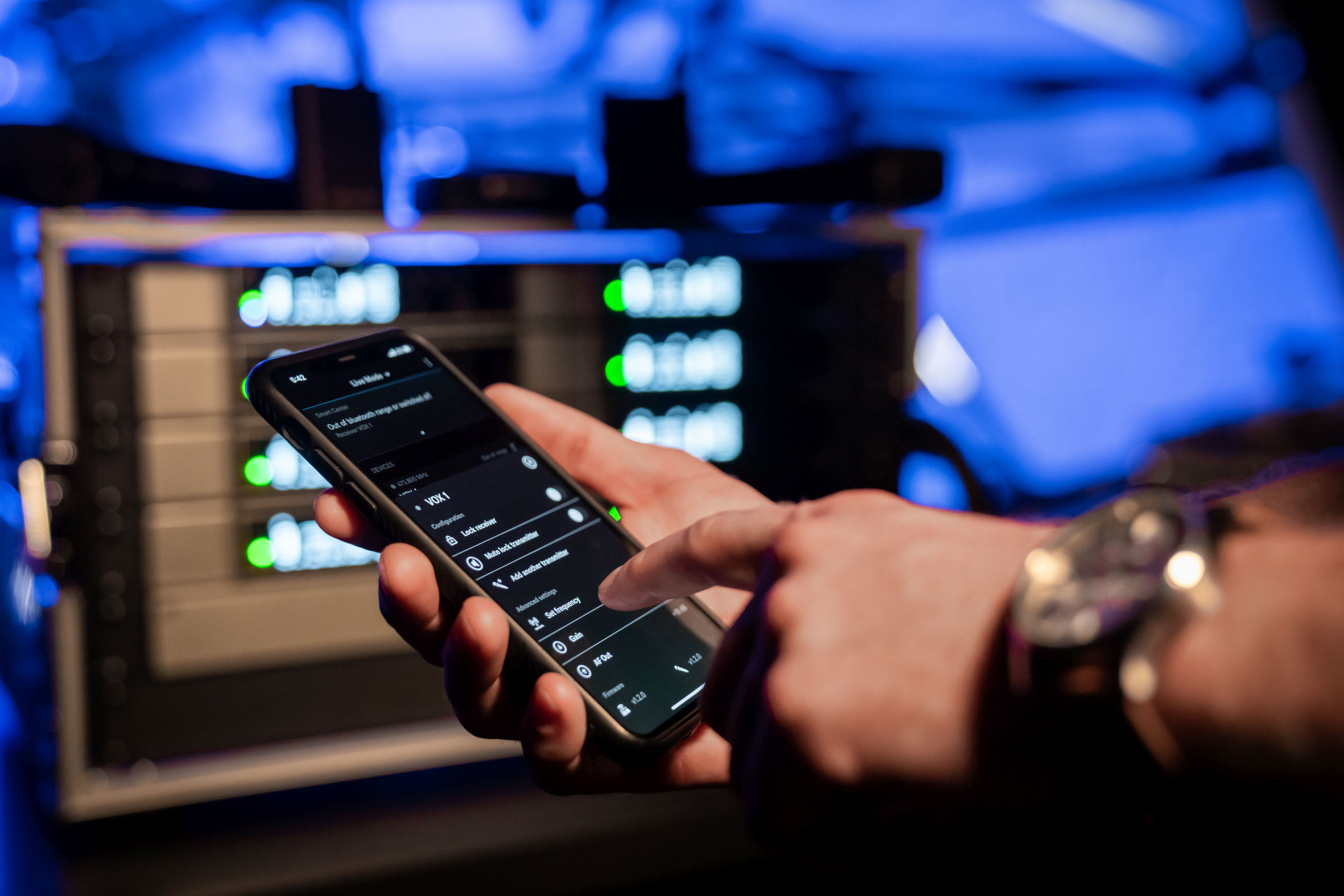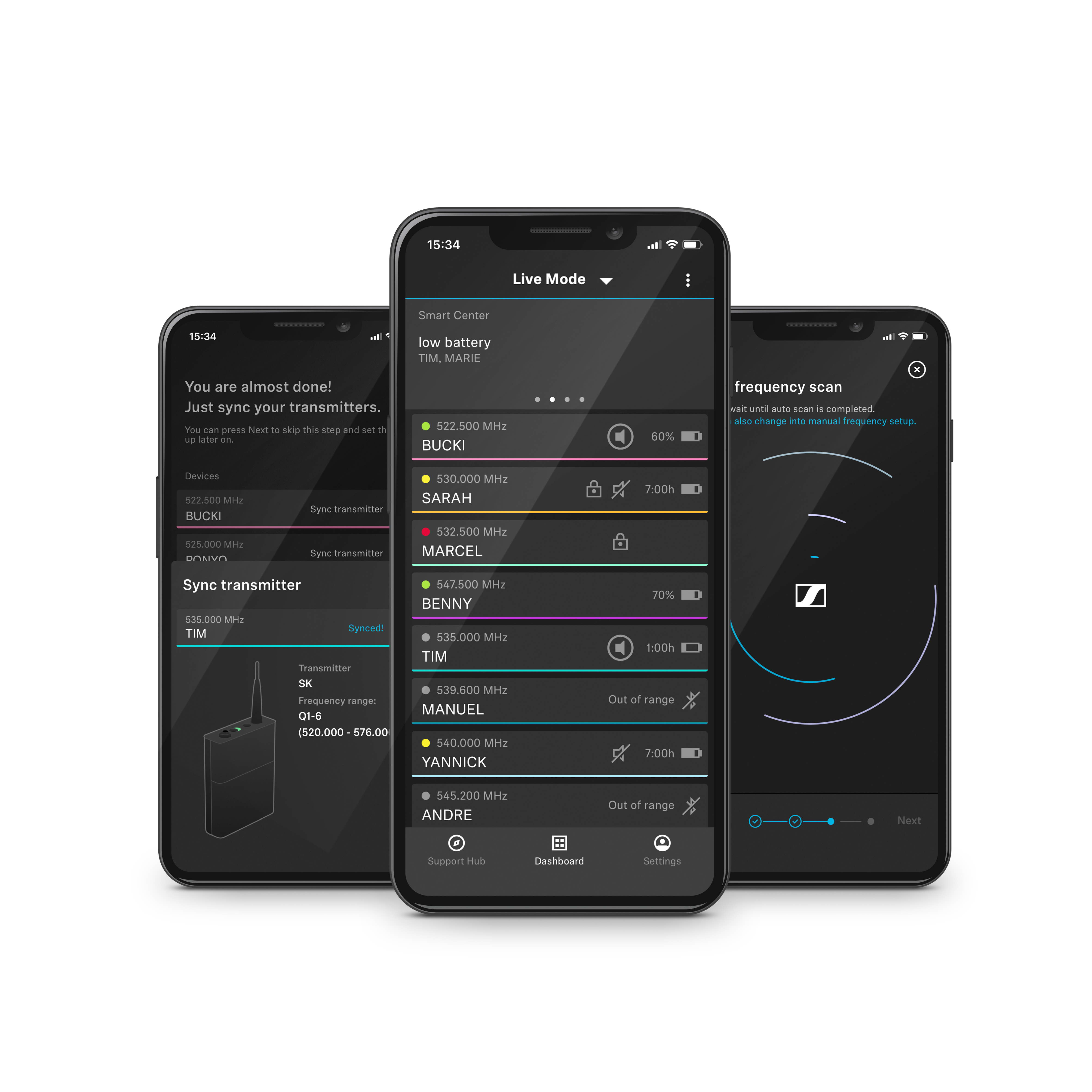Evolution Wireless Digital
16 August 2021

An Interview with David Missall, Sennheiser Business Communication
David Missall is Sennheiser’s Insights Manager for Consultants and a Technical Application Engineer. In this interview, David talks about the relevance of Evolution Wireless Digital for the AV and IT solutions market.

David, what sets Evolution Wireless Digital apart in the AV and IT solutions market?
Evolution Wireless Digital offers an incredible value, I see it as the digital silver bullet for the market, meeting a lot of needs at an affordable price.
It works on UHF frequencies, features the latest technology in digital wireless transmission, the ability to set up multiple wireless channels in minutes, and of course, superior audio quality. Add on the automatic frequency setup via the Smart Assist App, an input dynamic range of 134 dB – five times more than the usual 120 dB –, low latency of 1.9 milliseconds and a transmitter battery life up to 12 hours with a rechargeable battery pack. This end-to-end solution is really simplifying the workflow for AV and IT customers.
At this price point we are offering the highest input dynamic range, ease of use and almost zero intermodulation between transmitters. Since there’s negligible intermodulation, the system offers superior efficiency in how many frequencies it can fit in a given space, stacking them closer together and being more resourceful within the available spectrum.
Who would be typical end users in AV and IT?
This solution will find its place where ease of use and versatility are paramount. We will see EW-D in classrooms and on school stages, in meeting spaces and conference rooms when you need more than one channel of wireless microphones, but are not in need of a fully scaled networked system with hundreds of channels of wireless and full central monitoring capability and analytics. This is for schools and offices that are looking to be cost effective, reliable and frequency-efficient, while still maintaining excellent sound quality.

For corporate or school events, the AV teams don't have the bandwidth to do extensive frequency scans or battle with settings for wireless systems. These users want a microphone system that is reliable, and just works right away without needing to become or call on an RF expert. For instance, businesses and schools don’t always have a technician to monitor their wireless network and set up their audio system before a lecture or presentation. Evolution Wireless Digital is all about simplicity and ease of use, so even administrators with no formal training can plug-and-play their microphone system using their smartphone and achieve excellent, wireless audio.

We’ll also see EW-D in public tradeshows, conferences, workshops and other presentation spaces. While these situations don’t require networking, there are typically dozens of wireless systems in the same space. For example, a perfect application would be when someone is presenting at InfoComm or ISE. Typically, there are many other presentations and panels taking place in different rooms. The Evolution Wireless Digital operates in the professional UHF band and will enable the presenter or onsite AV support to easily get set up with the mobile app, despite competing wireless technologies. The system will do the frequency scanning and coordination for you.
What went into the EW-D’s development?
The Evolution Wireless Digital has been a long time coming. This is the first time for Sennheiser to have a digital system at this price point, and that’s because the way that Sennheiser develops wireless systems is unique. We look at it from the top down, focusing on how we can create the absolute best, most premium and innovative product, and then using the learnings from the development of the high-end product to solve for other applications. While it is not always the fastest go-to-market strategy, it has a proven track record of success and has allowed us to set several industry benchmarks.
For instance, look at our Digital 9000 wireless system. This was where we learned to make the best – by making the best. It was and remains the only digital wireless system with uncompressed audio in the market today, even though it was developed years ago. We learned from this product and worked to take the technology down to an affordable level, without compromising on performance, which was how we came up with the Digital 6000. We have now distilled our learnings from this product family into the Evolution Wireless Digital. At Sennheiser, we are laser focused on building the finest technology available, and then use our learnings to see how we can add accessibility and serve new markets. In the end, it is our business to make sure that the customer always wins regardless of which wireless solution they choose.
.jpg)
How has Sennheiser ensured that the EW-D is user friendly?
Before and during the development process, we were in close contact with various end user groups to ensure that we were intimately familiar with what our end users like and don’t like in interacting with a wireless system. We looked at physical interactions of our customers with a transmitter and receiver, as well as how they respond to the mobile application. By involving end users from the beginning and then, later, inviting them to rigorously test demo versions, we took away live feedback on pain points with system set up, gain setting and frequency selection. We approached these pain points and eliminated them, which led to an incredibly user-friendly product.
.jpg)
For instance, getting gain setting on a transmitter right can be tough and not too easy to adjust. Challenges with frequency coordination is another theme from the feedback – end users were frustrated with having to hunt for a clear frequency and confused about deciding on which one to go with if there’s more than one open frequency.
We took all of this and turned it into the Evolution Wireless Digital and the Smart Assist App. The app automatically selects frequencies and ensures that they are working efficiently, eliminating the frustrating parts of wireless setup with frequency selection. And for gain adjustment, we added so much dynamic range (134 dB) to the transmitter itself, that you don’t need to worry about overloading the transmitter input stage. We took the transmitter gain adjustment out of the equation and put it in the receiver. There is a two-stage gain adjustment in the receiver that can be controlled remotely from the app.
The Smart Assist app also features extensive user guides for setup and more, adding to the ease of use for this product.
Why should consultants take note?
Evolution Wireless Digital is another problem-solver in their toolkit, offering their customers a digital Sennheiser solution where there wasn’t one before. Not everybody needs networking when considering a wireless system. There are always scenarios where end users need a smaller channel count with a digital system. The EW-D is the affordable digital solution from Sennheiser that doesn’t need to be networked. Adding the Evolution Wireless Digital to Sennheiser’s portfolio of options offers a well-rounded and compelling suite of solutions for the consultant market. And for those customers in need of a networked system, we also have the feature-rich SpeechLine Digital Wireless solution.
www.sennheiser.com/ew-d-business
The high-resolution images accompanying this interview can be downloaded here.

.jpg)
.jpg)






